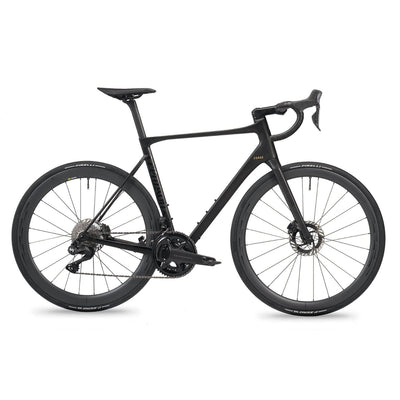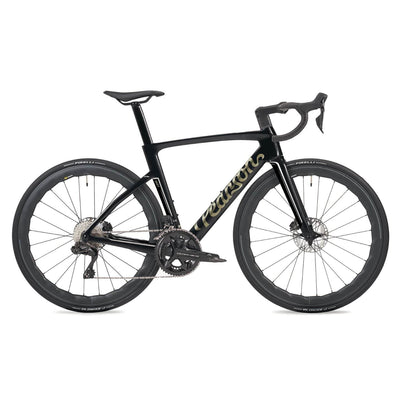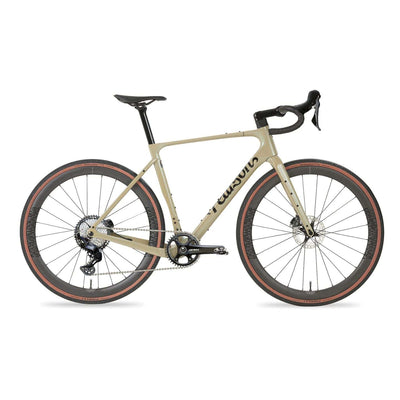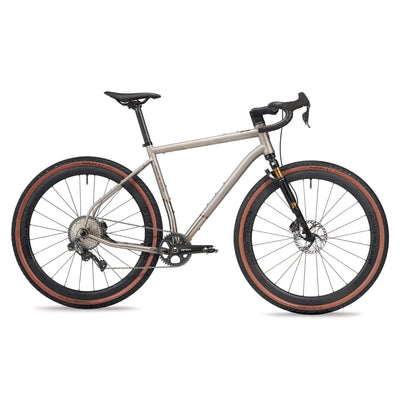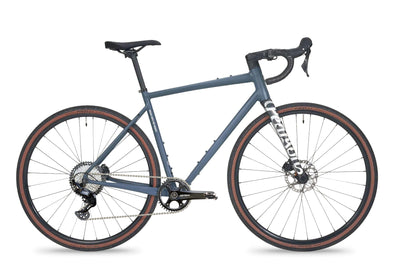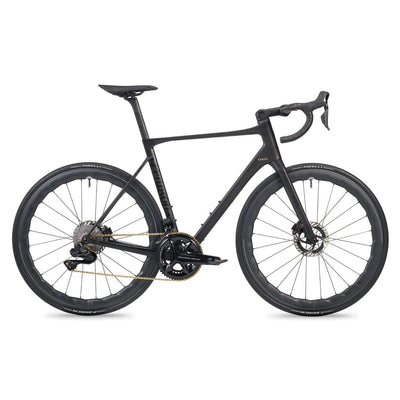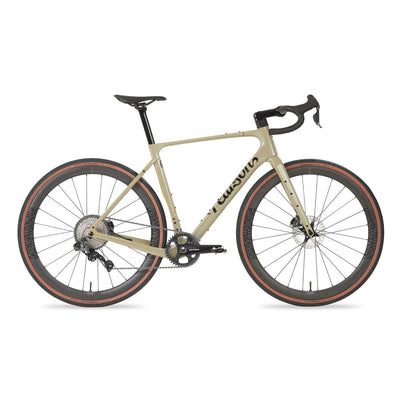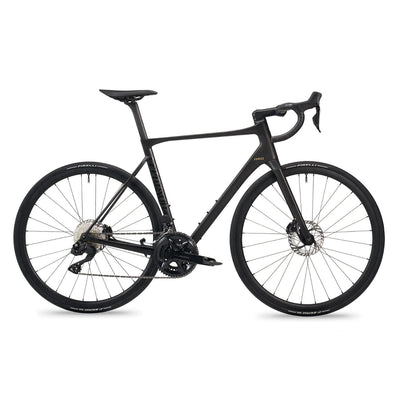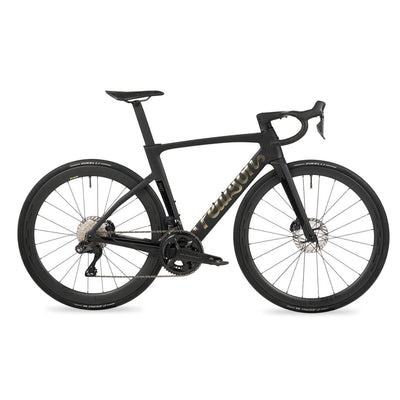How to choose the right tyres
It’s surprising how much difference a good set of tyres can make to your ride experience. Some tyres just feel faster and more grippy than others and can give you a more comfortable ride, whatever pressure you choose to run them at.
So how to decide which tyres to fit? Here’s what to look out for.

How wide?
A key starter is how wide your tyres should be - and what you can fit in your frame. Gone are the days when road cyclists bought a set of 23mm tyres, pumped them up to 120psi and bumped off down the road.
The discomfort was supposed to be outweighed by more speed. Wrong. Studies have shown that a wider tyre run at lower pressure will deform more in response to the all-too-frequent road imperfections, so that rather than you and the bike bouncing over them, your bike will roll over them more smoothly and you’ll be faster as well as more comfortable.

So almost all modern bikes will come with 25mm tyres or wider and 28mm is quickly becoming the norm. Objects In Motion titanium road bike comes with 28mm tyres as standard, while the Minegoestoeleven has the choice of 28mm, 30mm or 32mm tyres.
That’s great if you’ve got a shiny new disc brake bike. But rim brakes constrain how wide a tyre you can get between the calipers. You can usually just about squeeze a 28mm tyre in, but 25mm will be an easier fit.
And older rim brake frames may just not have the room for anything over 25mm, so you may have to settle for that.
It’s not just tyres that have got wider either. Modern wheel rims are typically around 20mm wide internally and some are much wider than this, whereas older designs might be as narrow as 15mm.
Wider rims support wider tyres better, so that the tyre’s sidewalls are flatter, rather than making a “lightbulb” shape. That means there’s less tendency for the tyre to squirm, particularly when cornering on a tyre run at lower pressure. It also results in a more streamlined interface between the tyre and the rim, which tests show improves the wheel/tyre system’s aerodynamics.

But the wider rim also increases the effective diameter of the tyre, so you’ll often find that a nominally 28mm tyre actually comes out closer to 30mm wide. That’s good for comfort and means that you can drop your tyres’ pressures even more, but it does exacerbate any clearance problems you might have.
So we’d advise going as wide as you can for the added comfort and faster rolling - just make sure a wider tyre will fit if you’ve got an older frame.
What type of tyre?
There are a number of different options here. The cheapest tyres use an inner tube and have a non-folding wire bead to hook them to the rim. It results in a heavy tyre and is reserved by tyre makers for their budget ranges, although you’ll sometimes find bike makers sneaking wire bead tyres onto their bikes to save a few quid.

You’ll need to use inner tubes with these tyres. The standard is butyl rubber and these tubes come in standard thickness and thinner, lighter varieties. Latex tubes are an option. They’re lighter still and they roll faster, as there’s less friction between the tube and the tyre casing.
But latex tubes are expensive and they leak air, so you need to pump them up more frequently than butyl tubes. They’re trickier to install, as they’re more floppy and prone to pinching, and more difficult to repair than a butyl tube. They’re a lot more expensive too, making them a race day option rather than a good bet for everyday riding.
There are also options like Tubolito’s inner tubes. These are lighter, stronger and more compact than normal tubes, but very expensive.

Then there are tubeless clincher tyres. As their name says, they’re designed to be used without inner tubes. That requires a tubeless-ready wheel rim and much closer tolerances to both the tyre and the rim than with a tubed set-up. The tyre bead must not stretch under pressure either, to ensure that it does not pop off the rim.
To achieve this, the tyre bead is usually made of carbon fibre. The carcass of a tubeless tyre has to be airtight too, so a tubeless tyre will be a bit heavier than a tubed clincher tyre, although the system weight of the tubeless tyre is likely to be comparable to a clincher tyre-tube combination.
Finally, you can run tubular tyres, “tubs”. Here the tyre is stitched together around the inner tube and glued to the rim or stuck on with double sided adhesive rim tape. A tubular rim has a dished shape rather than the clincher’s hooked profile. That saves weight and you can ride the tyre flat if you get a puncture at a crucial point in a race.

They’re still a favourite with the notoriously conservative pros. But they’re expensive, not easy to repair and require a degree of skill to mount properly, not to mention that the adhesive gives off toxic fumes. It’s fine if you’re not paying for your tyres and have a team of mechanics to set them up for you, but tubulars are a dwindling market and even pro teams are slowly abandoning them.
Tubed or tubeless?
The cycle industry has heavily promoted road tubeless technology over the last few years and the majority of wheelsets now come tubeless-ready. There are exceptions though, with Specialized’s recently introduced Roval Rapide CLX and Roval Alpiniste CLX carbon clincher wheelsets both requiring tubed tyres.
You can run tubeless tyres at lower pressures than tubed tyres, there’s no risk of pinch flats and the sealant in the tyre helps to protect you from a flat if you get a smaller hole in the tyre, avoiding a spell fixing your tube at the roadside. Rolling resistance is generally lower for a tubeless tyre than an equivalent tubed tyre too.

On the other hand, tubeless tyres are more expensive than tubed ones and you need to keep your sealant topped up regularly, as it will dry out over time.
Although many wheelsets can be run either tubed or tubeless, some wheels, including some of Zipp’s range for example, are designed to be used only with tubeless tyres.
There's a detailed explanation of how to set your tyres up tubeless in this post and check out the tyres we sell here.
Treads and threads
The other thing to consider when choosing a tyre is the tech that goes into it. That starts with the thread count of the tyre’s casing, measured in threads per inch or TPI. A higher thread count will result in a lighter, more supple tyre.
You’ll often see thread counts of 100-plus on pricier tyres, whereas cheaper ones might have thread counts around 50TPI. A heavier duty winter tyre might have a lower thread count so that it’s more robust. Tubeless tyres too typically have lower thread counts as the casing needs to be more durable to remain airtight.
Cotton casings tend to be more supple than synthetic ones and also tend to be saved for pricier tyres. They’re not as durable as nylon though and not suitable for tubeless tyres. So-called Open Tubular tyres are a premium option from some brands and will have a cotton casing.
It’s usual for a tyre to have some form of puncture protection strip under the rubber tread. Most have a name that’s proprietary to the tyre maker, like Continental’s Vectran or Schwalbe’s V-Guard.

The protection layer adds weight and reduces the tyre’s flexibility, so it’s usually just included under the part of the tread that’s in contact with the road in performance, summer tyres.
In contrast, tyres designed for winter riding like the Continental Grand Prix Four Seasons may have multiple layers of protection which run under the sidewalls too. Called bead-to-bead, this ups durability but at the expense of added weight.
Most tyre companies will have different rubber compounds that they use for different tyres. Their premium compounds will often contain silica for improved durability and grip, while graphene is an increasingly common component. Winter tyres will use compounds that prioritise wet weather grip over low rolling resistance.
Tread pattern isn’t so important for road tyres as for car tyres, as the contact patch is small enough that the tyre will displace surface water, so many summer tyres will have a slick tread. You’ll usually find a more significant tread pattern in tyres designed for winter road riding though, to add some extra grip.
Tread pattern becomes much more important in tyres designed for gravel and cyclocross bikes. Here, it’s key for grip on loose or muddy surfaces and you’ll find different patterns for different conditions.
Lower profile designs like the WTB Byway tyres on our All Mod Cons will ride as fast on tarmac as a winter road tyre, but also give you some extra grip on loose surfaces. On the other hand a tyre like the Vittoria Terreno Wet will give you outstanding grip in muddy conditions, but roll more slowly on road.

Narrower tyres around 33mm, designed for cyclocross, tend to work better in muddy conditions than wider ones as they sink further into the slop, whereas wider tyres of around 40mm will up ride comfort on harder, bumpy surfaces.
Choosing the right tyre for off-road riding becomes something of an art and can make the difference between an enjoyable ride and a miserable one or between winning and losing a race. Pro cyclocross riders will have an array of wheels set up with different tyres, so they can choose the right ones for the conditions on the day.

In general, we’d recommend going for tyre makers’ high spec offerings, as you’ll get the best tech and premium rubber compounds. They may cost more, but they should be lighter, more pliable and roll faster, giving you a better riding experience.
Read article 'How to fit tubeless tyres' here >
Read article 'Why it's a good idea to upgrade your wheels' here >
Read 'Tyre Tracks' BBC6 Radio Nemone cycling playlist here >

